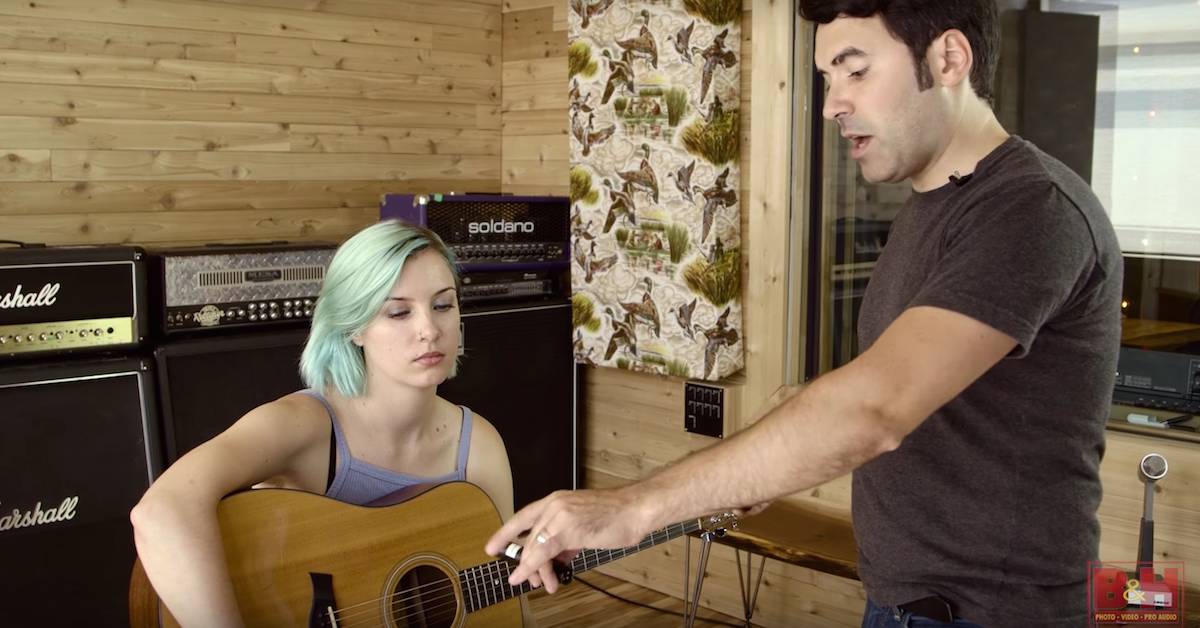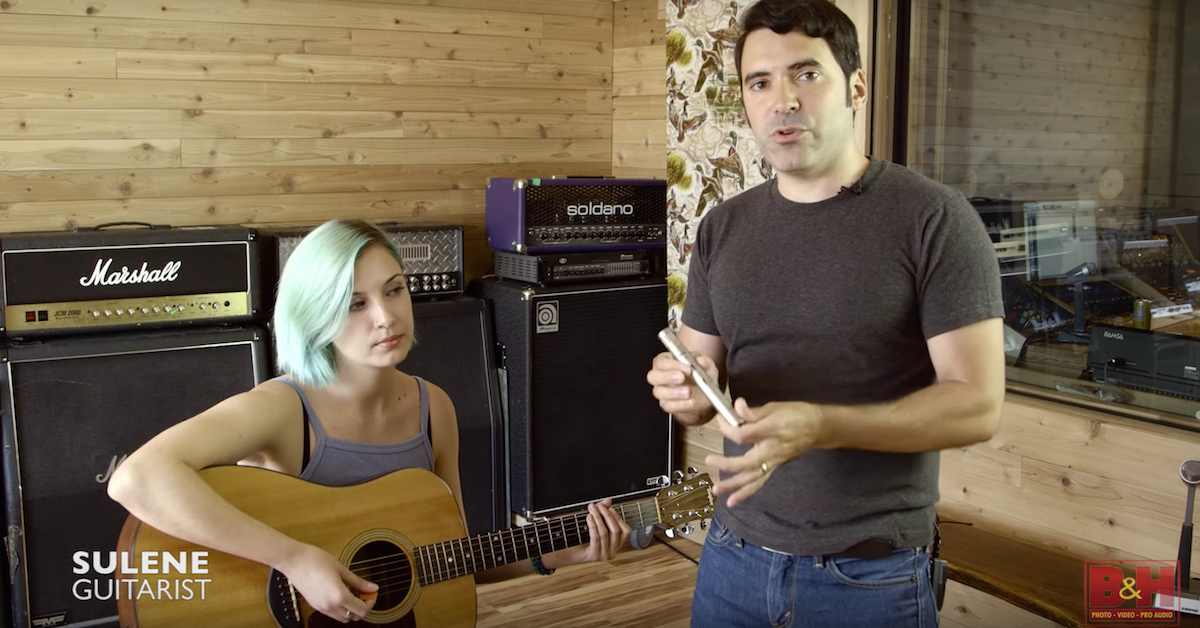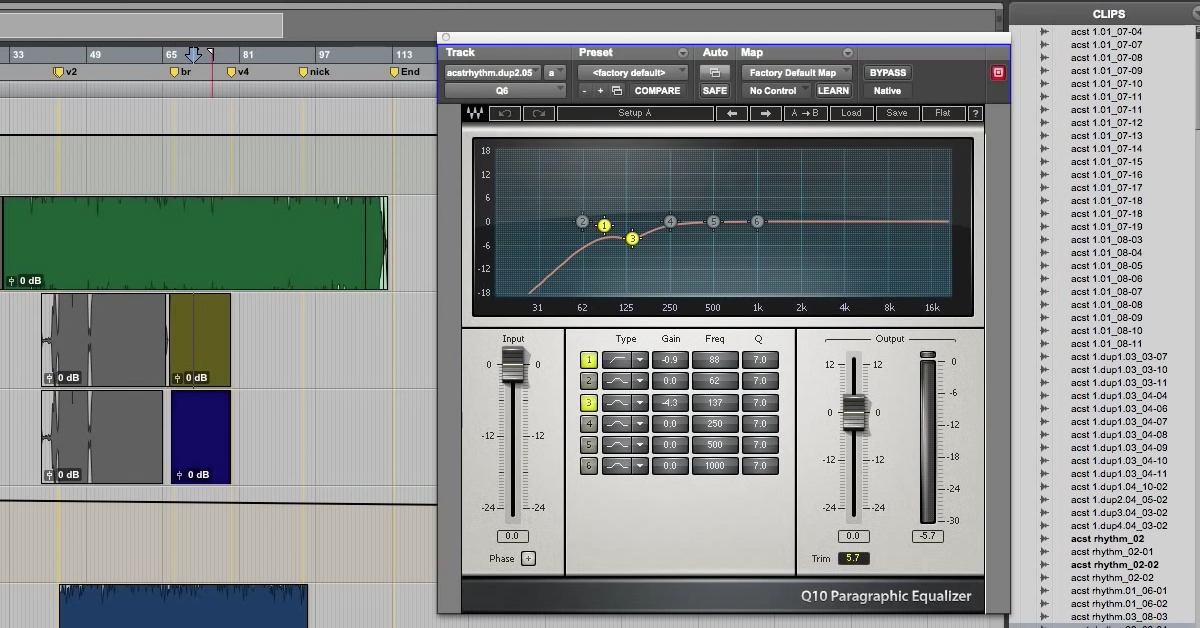5 Effective Ways to Record Acoustic Guitar
Article Content
The acoustic guitar is an essential instrument in a wide range of musical genres including Pop, Rock, Folk, and Country. It is also one of the most common instruments to record, as it is the foundation and backbone of many songs.
Whether the guitar needs to fit in the context of an entire band or solo as the instrument behind a vocal, the tone plays a significant role in the success of a mix.
In order to end up with a good tone for the acoustic guitar at the end of a mix, it is important to properly capture the initial performance.
Many times it’s sufficient to throw up a single microphone on the guitar and capture a mono signal. In other cases the acoustic guitar needs to fill out more space in the stereo field. However, it’s not always obvious to decide how the performance should be captured and panned.
Some acoustic instruments, like drums and piano, have a natural stereo width due to their physical size and how they are typically heard.
As an example, it is logical to pan hi-hats to one side and the floor tom to the other side. It is also reasonable to pan the piano based on the musician’s perspective with the lower notes on the left and the higher notes on the right.
Because there is no obvious convention as to how the acoustic guitar should be captured and panned, an audio engineer has many options. Here are five ways an acoustic guitar can be captured in stereo.
1) Vertical X/Y at the 12th Fret
When miking an acoustic guitar, a good place to start is placing the mic(s) close to the 12th fret.
This location provides a good tonal balance between low and high frequencies. It also provides a good balance between the rhythmic, percussive clarity for the instrument’s strumming and the tonal sustain of the strings.
One way to use two mics to capture an acoustic guitar is to place both mics near the 12th fret.
By using an X/Y configuration, one mic can be angled toward the low strings on the guitar and one mic can be angled toward the high strings. In this case, the lower notes on the instrument will be captured at a higher amplitude in the first mic and the higher notes on the instrument will be captured at a higher amplitude in the second mic.
This technique can be a way to capture a stereo image of an acoustic guitar that resembles an acoustic piano with lower notes panned left and higher notes panned right.
If you already have a piano panned this way in your mix, you could flip the panning on the guitar so that the opposite is happening with the acoustic guitar. This is a good way to balance both low frequencies and high frequencies across the stereo field with multiple instruments.
2) Horizontal X/Y at the 12th Fret
This miking technique is a modification of the vertical X/Y at the 12th fret.
Rather than pointing one mic at the low strings and one mic at the high strings, in this technique one mic is angled toward the instrument’s sound hole while the other mic is angle up the neck.
The microphone pointed toward the sound hole will capture a signal with a louder low frequency response. The microphone pointed up the neck will capture a signal with a quieter low frequency response.
This is another method to capture a performance where the spectral balance differs across the stereo field, and can compliment another instrument like piano.
In this case, lower strings and higher strings are not spread across the stereo field. Rather, the spectrum for all strings is spread across the stereo field.
3) Horizontal M/S at the 12th Fret
This technique is conceptually a combination of the previous two techniques.
One uni-directional microphone is positioned toward the neck at the 12th fret and one bi-directional microphone is positioned near the sound hole.
The bi-directional microphone should be rotated so that the front and back are perpendicular to the body of the guitar. A Mid-Side matrix is set up with the bi-directional microphone so that the front captures more of the low strings while the back captures more of the high strings.
Between the two microphones, the uni-directional microphone will capture lower frequencies at a lower amplitude than the bi-directional microphone. Therefore, blending between the two mics allows for control over the spectral balance of the captured performance.
The two signals created from the bi-directional microphone can be used to have more amplitude of the low strings on one side of the stereo field and more amplitude of the high strings on the opposite side.
Depending on the desired tonal balance, the position of the mics could be swapped so the bi-directional mic is near the 12th fret and the uni-directional near the sound hole.
4) Ambient Spaced Pair
One reason to choose a miking technique for the acoustic guitar is to have a spectral balance of tone across the stereo field. Another reason to use a stereo miking technique is to use the stereo field to add spatial depth to the instrument. This can be accomplished by using a balance of close and distant mics.
One version of this would be to use a single close mic near the 12th fret of the guitar and a spaced pair of ambient room mics.
The close mic can be panned to the center of the stereo field. Then the spaced pair of microphones can be panned left and right.
Mixing more of the close mic will push the acoustic guitar up-front in the mix.
Mixing more of the spaced pair will add depth and push the acoustic guitar back in the mix.
This technique can work well if you have a studio with a good room sound.
In many situations, other instruments are given preference to the best room in the studio while the acoustic guitar is recorded in an isolation booth. Whenever possible, spend the extra time to overdub the acoustic guitar in the best room.
5) Player’s Perspective
The motivation for miking techniques used with drums and piano comes from the common way that these instruments are perceived.
A similar concept can be applied to the acoustic guitar.
In this technique, microphones can be placed in proximity to the physical location where the performer will be hearing the instrument.
One microphone can be placed near the left ear of the performer and one microphone can be placed near the right ear of the performer.
In this case, the performer’s head acts as a baffle or gobo between the microphones to increase the difference in the captured signal. The captured signals by the microphones should provide a natural stereo image because they will be similar to the signals captured by the performer’s ears.
Conclusion
In summary, recording an acoustic guitar can be a very creative process for an audio engineer.
There are many different options for capturing the sound of the instrument.
When it comes to stereo miking techniques, don’t hesitate to experiment with different possibilities to achieve a tonal and spatial balance across the stereo field.





